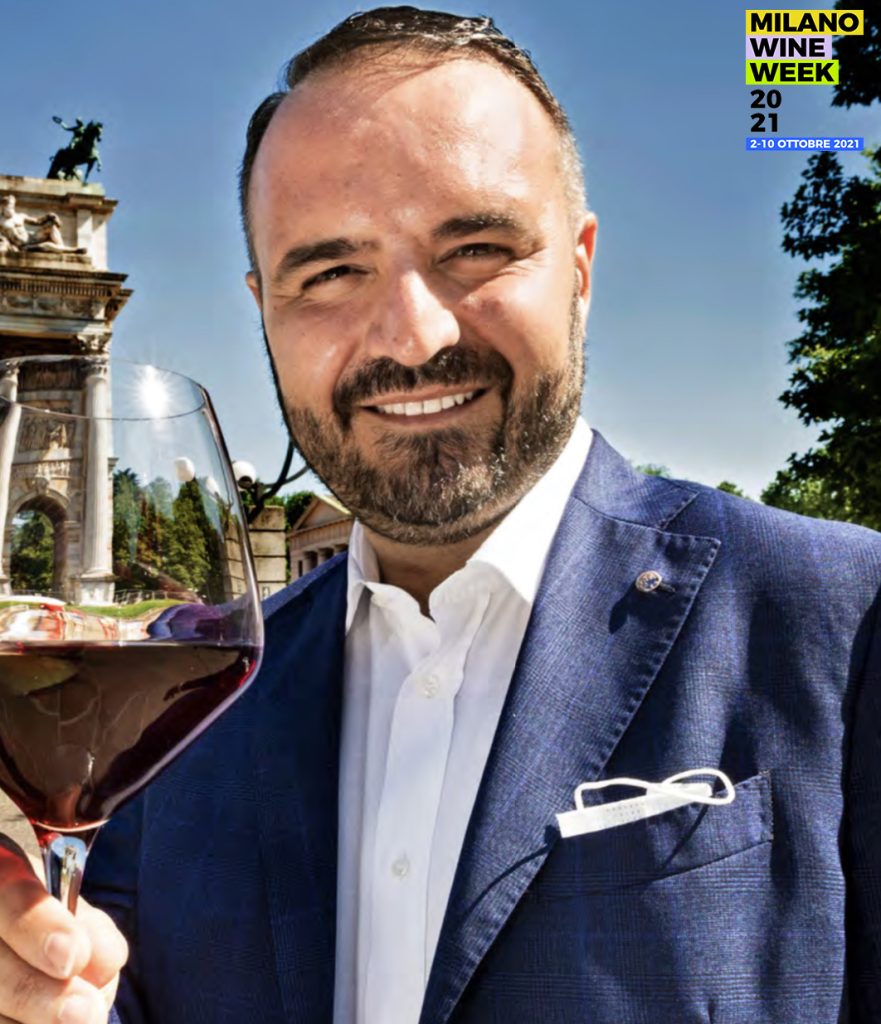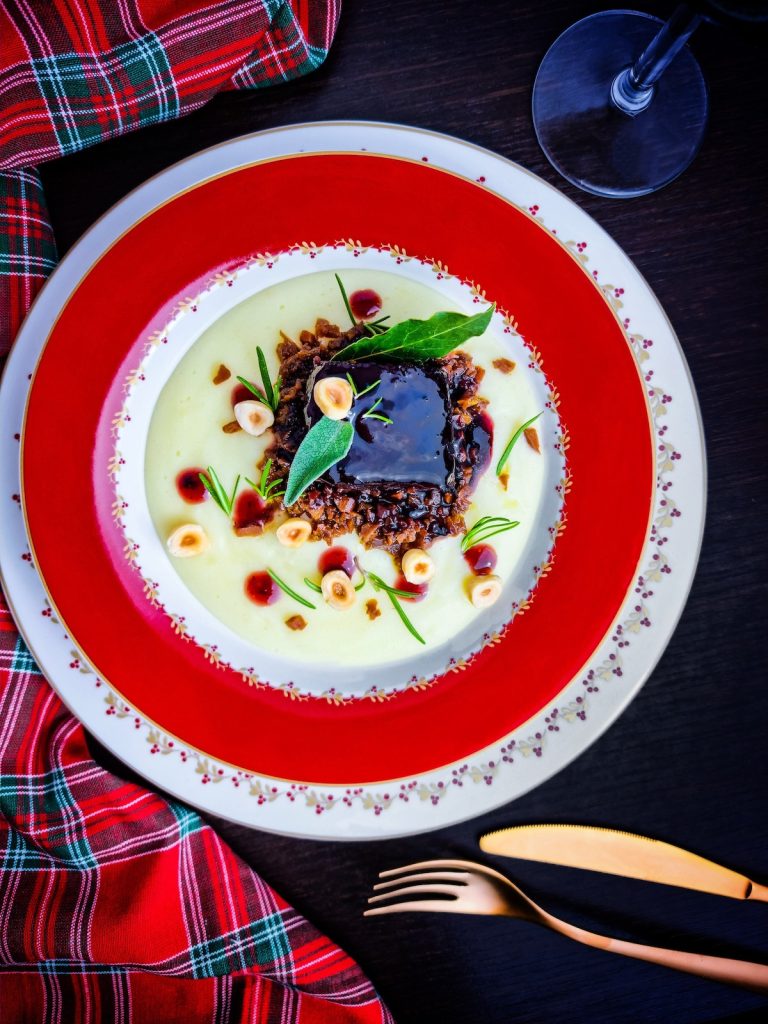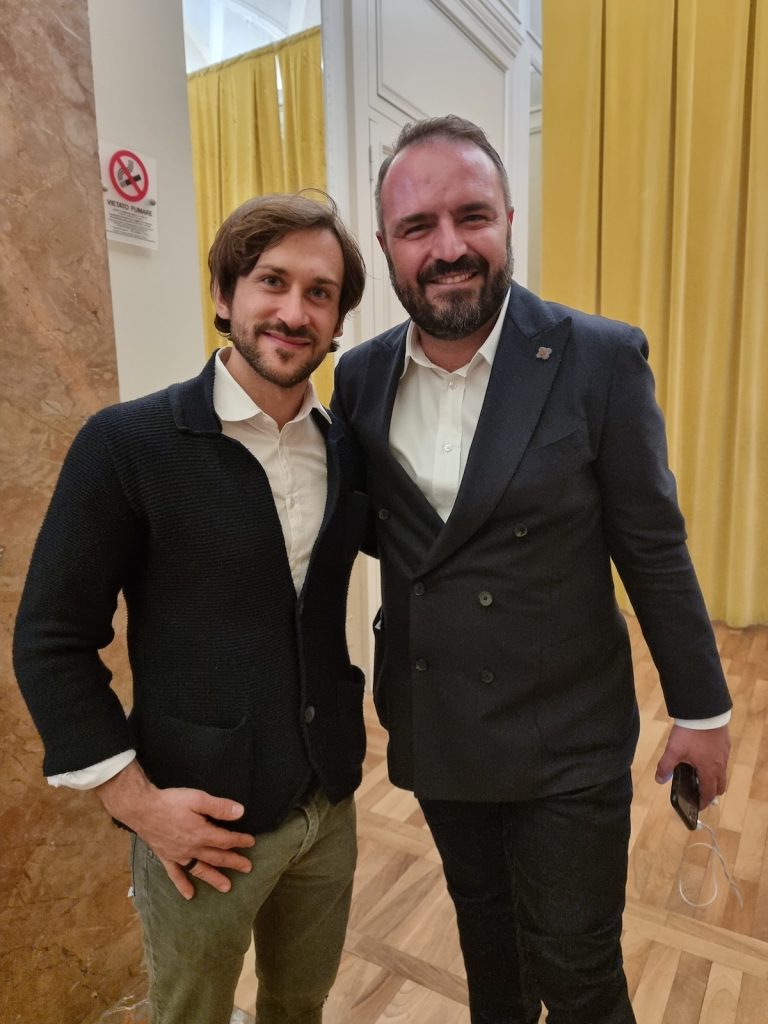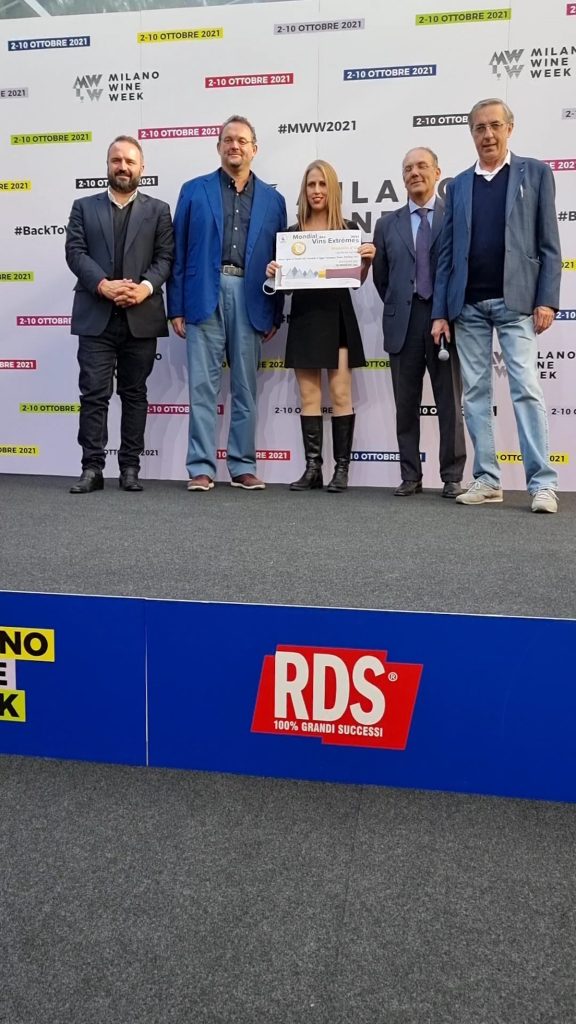Plus, a special dish inspired by Brunello di Montalcino
“The wine business has restarted in Milan,“ was the most resounding slogan during Milano Wine Week and I must say that the feeling during my visit was just that. Arriving in Milan was a sort of a return to the past with an eye to the future. I rediscovered the pre-pandemic character of the Milanese capital with its tight rhythms and metropolitan charm. A swarming of different people with different directions, but in whose eyes, one seems to read the same projection towards an important goal. I found this same determined and dreamy look in Federico Gordini, the soul and creator (president) of Milano Wine Week, whom I had the good fortune to meet. I took advantage of his kindness to extract a few statements from him:

In such a complicated moment Milano Wine Week goes against the tide, proposing an even richer edition, even doubling the number of events and happenings…
Exactly, to look to the future in a positive way you must invest. We have raised the bar and will continue to do so next year. It is important to give a sign of recovery and to relaunch one of the sectors that suffered most from the pandemic situation.
What does it mean to organize such a big event today?
It means working in perfect synergy with all the actors. We organized this event in perfect compliance with the security protocols that enabled us to manage the flow of people and distancing. There has been exceptional collaboration from everyone: companies, venues, the public, and compliance to the new rules imposed by the Covid 19 emergency. This collective effort therefore enabled us to manage this event optimally at a time of crisis.
What is the goal of Milano Wine Week?
Our aim is to consolidate a liquid and transversal event that brings together the world of wine and food with that of fashion, design, and art and that is important for both the world of wine and for all the wine, food, and hospitality businesses. Milan wants to be a reference point for all wine lovers and play a strategic role in sales by celebrating wine in all its forms. Plus, offer a unique and global stage for operators in the sector: a stage where relationships can be built and dialogues between companies, producers, territories and the end consumer are established.
At an ongoing event… do you feel you’re ready to take stock of it?
The balance is more than positive. There has been record attendance and the events are all sold out, proving that we are on the right track. Our goals are to rewrite the way we communicate wine in a fresher and more innovative way.
We are doing so by focusing on young people and their education. They are the real engine on which to bet.
A comment about VinItaly: your alleged competition?
Milano Wine Week was created with the aim of uniting in a major event, the entire world of wine production, distribution and consumption, as well as those of fashion and design. Therefore, a systematic event is in no way an alternative to VinItaly which is more concerned with the exhibition world. Also, it takes place at a different time of year.
In my opinion, the future of wine is in Milan.
The Hub: Palazzo Bovara
With this triumphant phrase, the President left, leaving me with the beauty of the elegant neoclassical halls of Palazzo Bovara in Corso Venezia. The palace was the hub of Milan’s commercial events and the scene of conferences and meetings I attended. Here is where I saw the effective presence of the organizational team made up of so many young people. Additionally, present were important figures on the wine scene such as Riccardo Crotti, President of Confagricoltura Lombardia; Riccardo Cotarella, President of Assoenologi; Ettore Prandini, President of Coldiretti—just to name a few.
All of them were united in enhancing the value of Italian wine, protecting its increasingly threatened designation. Plus, conquer the wine world through managerial training and communication more suited to the times. Finally, abide to the international objectives of the Consortia, determined to restart, promote, and perform on foreign markets.
11 International Cities Participating
In this sense, Milano Wine Week seemed to me to be a great opportunity for wineries to showcase themselves and get in touch with the most strategic world markets through the numerous live broadcasts and streaming seminars linked to 11 cities (Montreal, Toronto, New York, Chicago, Miami, London, Moscow, Shanghai, Shenzen, Tokyo, and Hong Kong).
In addition, here was an opportunity for sector operators to participate in training and networking events. For an enthusiast like me, it was exciting to learn about the business side of the wine scene, based mainly on meetings, public relations and, above all, communication. It’s a dogma pursued by all producers, always looking for the best way to tell the story of their wine, territory, and history, which are essential elements for impressing the consumer. And Milan is certainly an excellent springboard for doing so.
As a consumer, I must admit that I was impressed by the many realities I had the opportunity to get to know and ‘taste’ through masterclasses of the highest level. Also, by wandering around the wine districts, i.e., ten areas of the city entrusted to the same number of Consortia. You could follow routes approaching the wine according to the district of reference such as: Franciacorta in the Brera, Garibaldi/Solferino area; the Consorzio dell’Asti e del Moscato d’Asti Docg in Sempione/Arco della Pace; the Conegliano Valdobbiadene Prosecco Docg in Porta Nuova/Gae Aulenti; the Consorzio del Lugana Doc in Porta Romana; Consorzio Tutela Vini Oltrepò Pavese in the Eustachi/Plinio area; Brunello di Montalcino in Galleria Vittorio Emanuele; the Valpolicella wine consortium in Marghera/Sanzio; Chianti Docg in the Navigli area; Consorzio Tutela Vini d’Abruzzo in Porta Venezia and InLiguria in the Isola area.
W: An App to Discover
An itinerant map that took me around the most beautiful areas of Milan, guided by my interest in these excellent wines, that you could also find in the restaurants taking part in the event, making everything perfectly themed. To help me I had the official MWW app, called ‘W’ (like Wine), through which you could consult events, manage bookings, and even look at the restaurants’ wine lists. Milano Wine Week offered over 300 events, so it was impossible to attend them all. The app helped me to sort through them all and create a personalized itinerary.
Wine Tours and Boat
Noteworthy were the Wine Tours: guided tours of wine territories located at short and medium distances from Milan. They included the historic Berlucchi winery where the first Franciacorta was born. Coined the ‘Italian Champagne’, its taste is a rich and intense protagonist of my best moments of conviviality.
The Wine boat navigated guests through the waters of the Naviglio Grande while they romantically tasted excellent Chianti. We were guided through one of Milan’s trendiest and most picturesque neighborhoods where the lively spirit coexists with the intimate soul of the alleyways in a ‘Venice of Lombardy’ atmosphere. The scent of the rolling Tuscan hills filled our glasses.
Food Events
Additionally, there were many, exclusive events dedicated to food. Francesca Romana Barberini, the well-known presenter and author of food and wine programs, organized the dinners and culinary encounters. She led ‘Segreti in tavola’ (Secrets on the Table): a series of six encounters with chefs, pastry chefs and bakers designed to arouse the curiosity of enthusiasts and newcomers throughout the week. (Of course, all programs were also broadcast online).
For the final weekend I attended the presentation of the Slow Wine Guide 2022 and the related tasting at Megawatt Court–a huge complex in the Navigli area. It was one of the most delicious experiences for wine lovers, as well as an opportunity to meet the producers, the best way to grasp all the qualities of the almost 900 labels present. There was a total of over 1,400 different wines from every corner of Italy. All were from local producers who work with the sole aim of generating products of a high quality standard.
I would have stayed there all day, but the dense network of appointments and my desire to attend as many events as possible brought me back to Palazzo Bovara where it all began. Although unfortunate that MWW had to come to a close, the finale was dedicated to heroic winemaking.


Lorenzo Diamantini & Federico Gordini 
© Lorenzo Diamantini
Cervim
Thanks to the partnership with Cervim (the organisation that safeguards and promotes these realities), the extraordinary stories of these producers and their supreme wines were brought to Milan. I believe that passion was the trait d’union between the enormous mechanism that revolves around the universe of wine and Milano Wine Week.
The return journey was a continuous flashback of emotions and tastes experienced during the week. The adrenalin remained high and, of course, I was a little melancholy at leaving what was ‘wonderland’ for a wine lover. Milano Wine Week was educational, fun and fresh, a very digital event. Filled with young and with contagious enthusiasm, it stays with you and like an excellent wine, impossible to forget.
Brunello: the Holy Grail of Wine
Personally, I have tasted many excellent wines, but unforgettable for me was the Brunello, the Holy Grail of wine, tasted during the international masterclass led by an exceptional sommelier, Filippo Bartolotta connected via London. He gave an excellent account of this Italian symbol of excellence and its production area. The hills around Montalcino are an ancient Etruscan village in the province of Siena and stands at an altitude of about 600 meters. It is enclosed by valleys on four sides.
Brunello has a great personality and comes from a noble and vigorous vine, the large-berry Sangiovese, endowed with great elegance. It is suited to challenge decades of ageing that, together with the oak, sculpt the character of this wine, giving us a bouquet of extraordinary complexity.
Brunello is a wine for those who know how to wait: it takes years for its full potential to develop: the tannins and acidity must refine, round off, and blend to create a magical interweaving of scents that become increasingly ethereal. A precious wine, which makes me think of a red, elderly, Father Christmas (Santa Claus), a wise myth that exudes warmth and tranquility, that make you wait and then gives great joy.
Brunello at Christmas
I believe that Christmas is the best occasion to open a bottle of Brunello, perhaps accompanied by a substantial dish, such as my brasato, braised beef, a recipe with a strong flavor and long cooking time which, while waiting, reveals the wonder of the flavors and fragrances that are released slowly, just like the long and sweet ageing of Brunello.
Both strongly stimulate the senses and warm the soul and are a perfect match for the Christmas holidays, the period of desires. And desires always make you wait, but when they arrive, the time spent waiting will never seem wasted.

Brasato al Brunello di Montalcino
Ingredients
For the brasato (braised beef):
- A piece of beef chuck roast/pot roast
- 1 bottle of Brunello di Montalcino
- a few juniper berries
- a few grains of black pepper
- cloves
- a few bay leaves
- a few sage leaves
- 1 onion
- 2 carrots
- 2 celery stalks
- 1 sprig of rosemary and 1 of fresh thyme
- a knob of butter
- shelled hazelnuts
For the potato cream:
- 900 g potatoes
- 200 g white onion
- 1 clove of garlic
- 1 liter of hot vegetable stock
- 2 celery stalks
- Olive oil to taste
- salt to taste
Procedure
- Tie up the meat and marinate it in the wine with the juniper berries; black peppercorns; onion; cloves; and two bay leaves.
- Leave it to marinate for at least 24 hours, turning it from time to time.
- Put a knob of butter in a high-sided saucepan with the sprigs of rosemary and thyme.
- When the butter is sizzling, quickly brown the meat and turn it often. Cut the vegetables (onions, celery and carrots) into coarse chunks and put them in the saucepan with the meat; let them flavor for a few minutes and add salt. Filter and add the marinade. Continue cooking over a very low flame for about three hours, turning the meat from time to time.
In the meantime, prepare the potato cream.
Peel the potatoes, cut them into cubes and keep them aside.
Cut the celery stalks into small pieces and set them aside.
Slice the white onion and fry it with the garlic clove and celery stalks in a large saucepan with a little olive oil.
As soon as the onion is soft and translucent, add the potato cubes and continue to cook for 5 minutes. Then cover with 600-800 ml of hot vegetable stock and turn down the heat to a minimum. Let everything cook until the potatoes are soft. (30-35 minutes).
Remove the garlic and blend the cooked potatoes with an immersion blender until smooth and velvety. Add salt to the cream, mix well and keep warm.
Toast the hazelnuts in the oven for five minutes.
Remove the cooked meat from the heat. Wrap it in foil so that it retains its heat, strain the cooking juices, and set the vegetables aside.
Serve with the cream of potato soup and the stewed vegetables. Drizzle with the cooking juices and garnish with toasted hazelnuts and a few bay leaves and sage.




